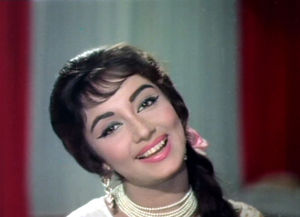 Requiem for a thali
Requiem for a thaliphotograph from http://www.sallys-place.com/food/ethnic_cusine/india.htm
A gleaming steel plate in which sit several equally radiant katoris, all empty, beaming with anticipation. You give a katori an impatient little twirl and wait, salivating gently. Suddenly, the kitchen door swings open and heralded by a drum roll of clattering spoons and pans, the show begins. First the band members walk in – the pickles, the pappadums, the chutneys, the kachchumbers, sometimes even a tiny, sparkling mound of salt. As they settle down and tune your taste buds, the supporting cast takes its place. A giggling rasam covered with little sequins of oil next to a serene, buttery moong dal. A palely elegant cauliflower poriyal dressed in frothy frills of coriander-‘n-coconut sneers at a fat, untidy, chortling aloo bhaji. A smooth-limbed kadhi undulates in lemony-golden swirls, tantalizingly veiled in transparent chiffons of steam, watched by a cool, still, white lake of curd. A charming kheer with a flawless pista-and-cream complexion smiles sweetly at a clownish bonda rolling across the steel floor to where several hot, perky pakodas chatter and vie for a dip in the refreshing green of the mint chutney. And finally, when everything’s in its place and the aromas apsaras have taunted and tickled your nose till you can’t bear it anymore, the star cast enters. Three pompously puffed-up pooris drop from the sky. Plop! They sizzle their opening lines, you gingerly poke their bellies and as a gust of hot air whooshes out, a delicious vaudeville begins……
To me, the thali epitomizes the Indian spirit. Every possible taste and flavour is welcome and there’s room for everyone in that happy circle. The sweet and the spicy, the juicily plump and the wafer thin, the lightly steamed and deeply fried, the fluffy and the crisp, things that make your taste buds squirm and tingle with delight, things that wash over them like a gentle lullaby. A dollop of this, a splash of that, things to dip into and to scoop out, things to slurp and crunch, things to fill the belly and uplift the soul. The thali is the world’s purest democracy where the first helping is the election campaigning where you give all a fair tasting and the second helping is when you cast your vote. Where you eat not in a boring straight line like the West does, going from soup to main course to dessert, but like the world, you go round and round, revisiting, reliving, reveling till every sense is sated and you’re in bliss. Which is when you lie back and let a gentle, happy little burp escape your lips, just loud enough for the gods to hear your paean of gratitude.
Sadly the thali is a dying breed in Mumbai, as endangered a species as the Bengal tiger. Oh there are places where you’ll find its pure-ghee, Roman orgy “deluxe” cousin that costs upwards of Rs.150 a pop and needs you to starve for at least 2 days to get past the farsan stage. But the plain simple South Indian fare, once available in almost every Udipi restaurant in the city is now almost extinct. And if you do find it, it’ll often be hideously bastardized, most of the items in it having crawled out of the horrible, greasy red slops, euphemistically called “Punjabi Items”, that feature on the a la carte menu. A few brave survivors still persist, like the Udipi Shri Krishna Boarding in Matunga that has served thalis of unwavering excellence since 1946, but for the rest……
Once upon a time, the Udipi restaurant was the affordable, wholesome option for genuine South Indian food. Not any more. Today, most of them offer a ghastly gallimaufry (yes, there’s such a word and it means hodgepodge!)of cuisine, as gaudy an assault on the taste buds as the décor is on the eyes. So there’s a Jain in the pizza, cheese in the uttapam, mushrooms in the dosa and the tomato omelet is not made with egg. The sambar is sweet, the sandwich is Russian, the paneer Schzewan and vegetables are anything from Peshawari to milijuli. There’s kadai, tawa, handi and matka, but nowhere in this noisy “gad bud” (yes, there’s actually a dessert by that name!) will you find amma’s thali. The thali is dead. Long live the thali!
